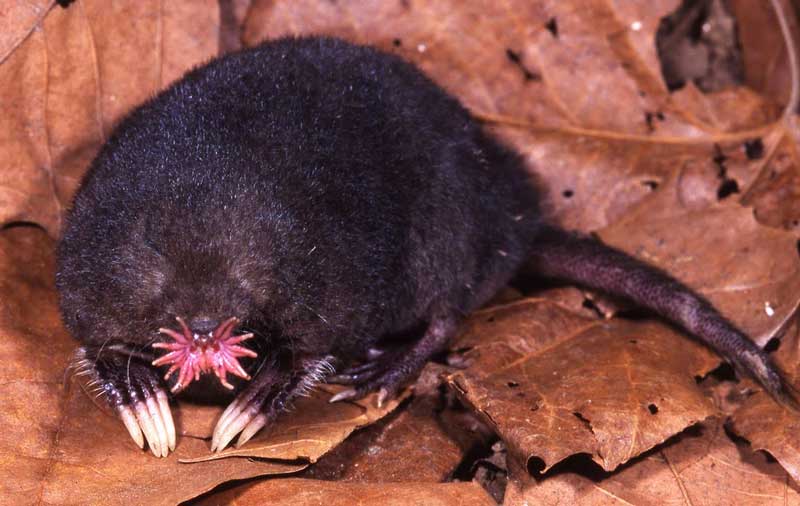
Found in moist, low areas in the northern parts of North America, the Star-Nosed Mole is one of the weirdest-looking animals of the world, equipped with more than 25,000 minute sensory receptors, resembling a tiny octopus. Although the name of the animal owes its origin to the shape of the receptors, which look like the protruding portion of the nose, it is not a smelling organ and they do not contain muscles or bones and are not used to manipulate objects or capture prey.
Those receptors, known as Eimer’s organs, help the animal to detect vibrations, which in turn help them to find and identify their food and consume it almost immediately, in a quarter of a second. It is much larger than the nose of other mole species and is divided into a high resolution central fovea region, equipped with 11 pair of rays and less sensitive peripheral areas, which contain around one to ten peripheral rays on each side, that vary in length from 1 to 4 mm. Despite the poorly developed eyes, star-nosed moles have that intricate system to detect prey and understand their environment.

Like the other species of moles, a Star-Nosed Mole has a stout, roughly cylindrical body with heavily-built forelimbs, broad feet and large claws. With their strong claws, they can quickly tunnel through the soil at a rate of up to eight feet per hour and in case of necessity, they can run at a speed of about five miles per hour.
However, unlike others, its hair is short, dense and coarser. Its fur is dark brown to black on the back and lighter brown underneath and during winter its tail swells 3 to 4 times its normal diameter.

Although the Star-Nosed Moles have been found in the Great Smoky Mountains as high as 1,676 metres, usually they prefer to live in wet, poorly drained areas and marshes and eat small aquatic insects, worms and mollusks, as well as lizards and small frogs and fishes.
They are good swimmers and can forage along the bottoms of streams and ponds. They have also been shown to blow bubbles into the water and then re-inhale them in order to sniff for prey, making them the first mammal is known to smell underwater.

The Star-Nosed Moles mate in the late winter or early spring, from about mid-March through April. After the completion of a gestation period that lasts approximately 45 days, the young are born in late April through mid-June, when the females produce one litter of typically four or five young, each weighing about 1.5 gm and is about 2 inches (5 cm) long. If a female fails to conceive after the first reproductive effort, she may mate again, producing a litter as late as July. At birth the young are hairless, the eyes and ears are closed and the tentacles of the star are folded back along the snout. The eyes, ears and star become effective after about 2 weeks. They become self sufficient and completely independent after about 30 days and reach maturity after 10 months.

Nothing much is known about the lifespan of the Star-Nosed Moles, but it is estimated that they may have a relatively long lifespan for a mammal of its size, perhaps 3 to 4 years. However, some Star-Nosed Moles have lived 2 years in captivity.